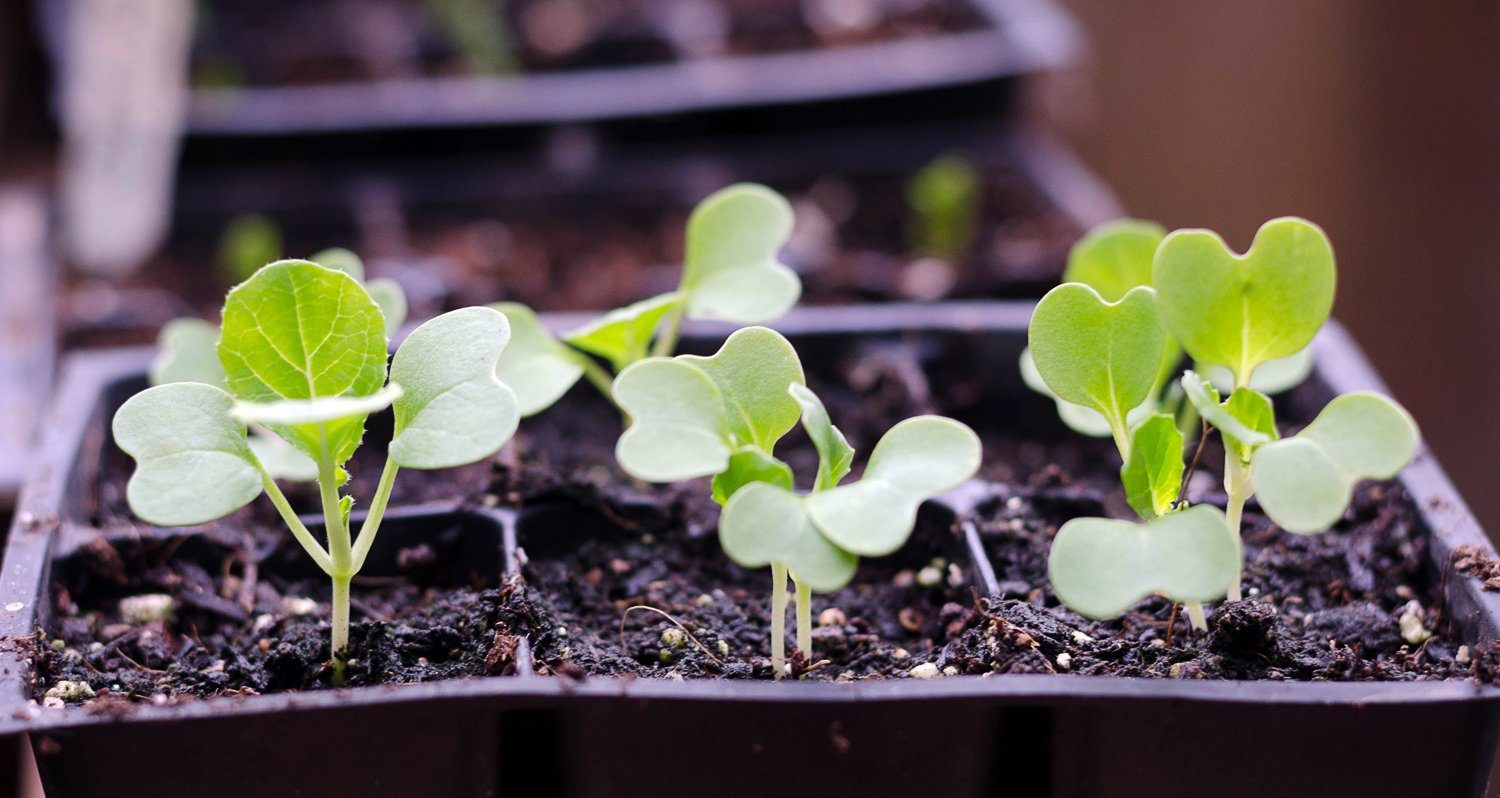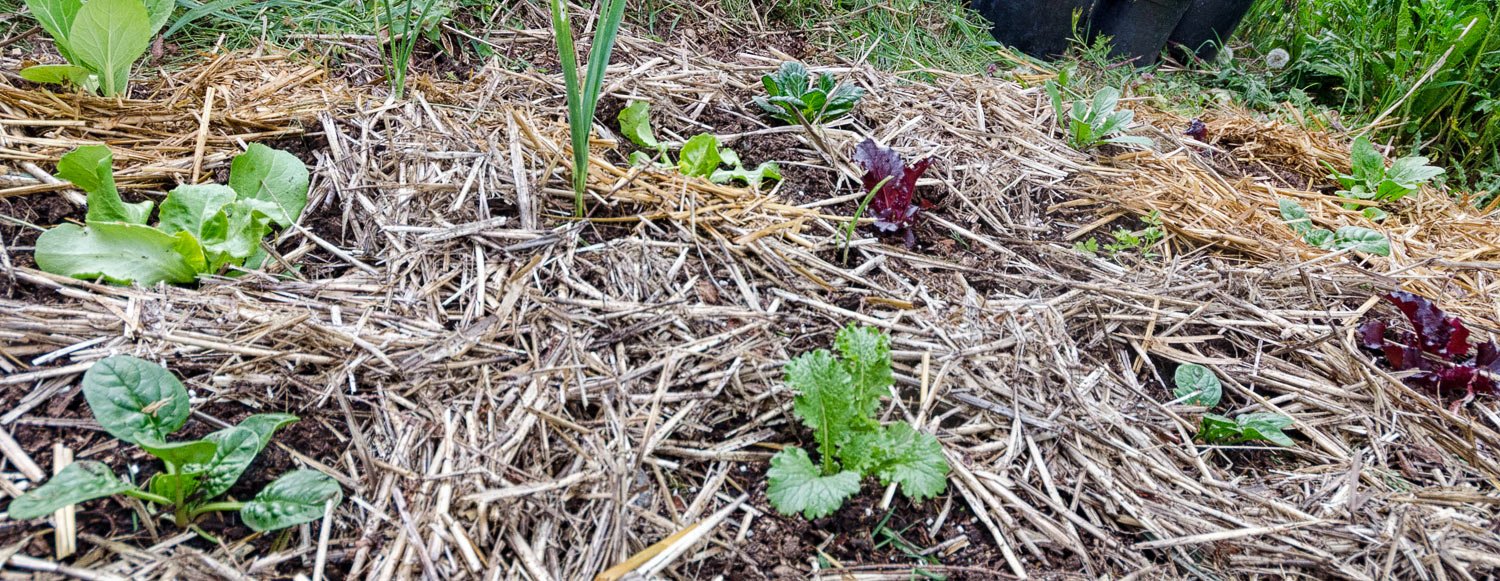Some gardeners like to believe that there’s no way to avoid transplant shock. Even worse, some even believe that transplant shock doesn’t matter—that it’s just a normal, unavoidable course of events that doesn’t really hurt the plant. This can’t be further from the truth. Transplant shock weaken your plants, making them more susceptible to disease and predation (something particularly significant if you’re transplanting them into their final beds). The good news is that it’s generally avoidable. All you need is a bit of care and proper handling.

Bok Choy seedlings recently transplanted.
What Causes Transplant Shock?
The main cause of transplant is damage to a plant’s roots. Plants absorb most of both their moisture and nutrients from root hairs that grow sideways off the roots. They’re tiny and grow far from the root ball in order to maximize their absorption area. They’re also very easy to damage when exposed to light, heat, or any kind of abrasion. The more you can protect these little hairs (and the roots in general, of course), the less likely your plant is to get transplant shock.
Here’s what to do:
- Make sure to harden off your plants before planting them outside.
If you’re moving plants that were grown inside to an outside location, they’ll need to be “hardened off” before being planted in your garden. Hardening off allows the plant to gradually adapt to its new outdoor environment—abrupt changes such as direct sunlight, moisture-zapping wind, and very different temperatures can cause your plant to be far more stressed than it needs to be. Lots of people skip this step because it’s sort of a headache, but it’s not advisable. Plants that aren’t hardened off not only have much more transplant shock, they also tend to be more prone to diseases and slug damage.
To harden your plants off, start by setting them out in the early morning or late afternoon (not the heat of the day) for four hours. The next day, let them stay outside for eight hours. The next day, twelve. Etc. Once your plants have been outside overnight for at least three days, they’re ready to plant into the ground.
- Avoid transplanting in direct sunlight, and even avoid hotter parts of the day.
- Water the soil (not the leaves) of the transplant a good 30-60 minutes before transplanting.
- Add a bit of transplant fertilizer to the soil before planting.
- Disturb the roots as little as possible.
- Water well after transplanting
- Don’t tamp the soil around the plants down.
Cool, overcast days are the best days to transplant, but if that’s not in your weather forecast, set up your transplanting station in the shade. Roots were made for the dark, cool nether regions of the earth. They’re easily damaged by light and heat. And while I’ve seen more than one careless gardener leave their transplants out with their roots exposed to the sun—don’t do that, even for a moment if you can help it. It places an exorbitant amount of stress on your plant, aside from being a sure fire way to get transplant shock.
Tip: If you have to plant out in the sun, position your body between the sun and the plant, using your shadow to provide shade.
Giving a good watering beforehand ensures that your plant is well nourished before being moved. This is important because one of its first reactions will be to close its stoma, stopping it from taking in water through its leaves. Filling up its tank beforehand ensures that it has plenty of time to ease into things. Also, moist soil helps you minimize friction against the roots. That means less damage to the roots overall and a speedier recovery if the root ball somehow gets disturbed.
Fertilizer made especially for transplants has everything they need to get settled in with the least amount of stress. You can get a dry form to put in the soil before planting (what I use) or a liquid form to put in after planting. You can also make your own.
) The plugs I plant in are small, so I often have to transplant when the seedlings are very young.
The plugs I plant in are small, so I often have to transplant when the seedlings are very young.
The ideal transplant is to not bother the roots at all, but this is often impossible. So do your best. Try to transplant well before the plant has filled the soil with roots and become root bound.
Believe it or not, insufficient water is one of the greatest contributors to transplant shock (after disturbing the roots). As mentioned before, if you disturb a plant’s roots, it won’t be able to take in water through its leaves for the next few days. This means having plenty of water available in the soil is crucial.
Tamping plants down by pushing on the dirt can cause more abrasion to the roots. A better way is to use water. The water will effortlessly settle the dirt around the roots without compacting the soil. Just water slowly and steadily and add more soil as needed.
) The bok choy seedlings before they were transplanted.
The bok choy seedlings before they were transplanted.
And that's it. If you follow these instructions you should rarely, if ever, see transplant shock. As you can see form the pictures, I often germinate in plugs that are quite tiny and need to up-pot pretty quickly--often before there are two true leaves on the seedlings. I still have absolutely no problems with transplant shock--even when I have to separate two plants out from each other.

Transplants happy in their new home.
Have questions or suggestions? Let me know.
Did you find this article helpful? Please upvote and resteem!

Community Forums
